Safes are typically freestanding secure boxes, while vaults are secure rooms or structures built into a building. Both protect valuables but differ greatly in size, construction, portability, and security levels.
Key Takeaways
- Safes = Boxes: Think of safes as strong, usually movable (though sometimes heavy!) secure containers. Many types exist for different needs (fire, theft, guns).
- Vaults = Rooms: Vaults are permanent, often room-sized secure areas built as part of a building, designed for high-level security or large storage.
- Portability is Key: Safes can be moved. Vaults are fixed; moving them means major construction.
- Construction Differs: Safes are self-contained units. Vaults use heavy reinforced walls, doors, and often integrate with the building structure.
- Security Overlap, But Different Scales: Both offer protection, but vaults generally achieve higher certified security levels against sophisticated attacks.
Table of Contents
Understanding Safes: An Overview
We generally know what a safe is, right? That tough box where you lock up important stuff. Let’s get a bit more specific though.
What is a Safe?
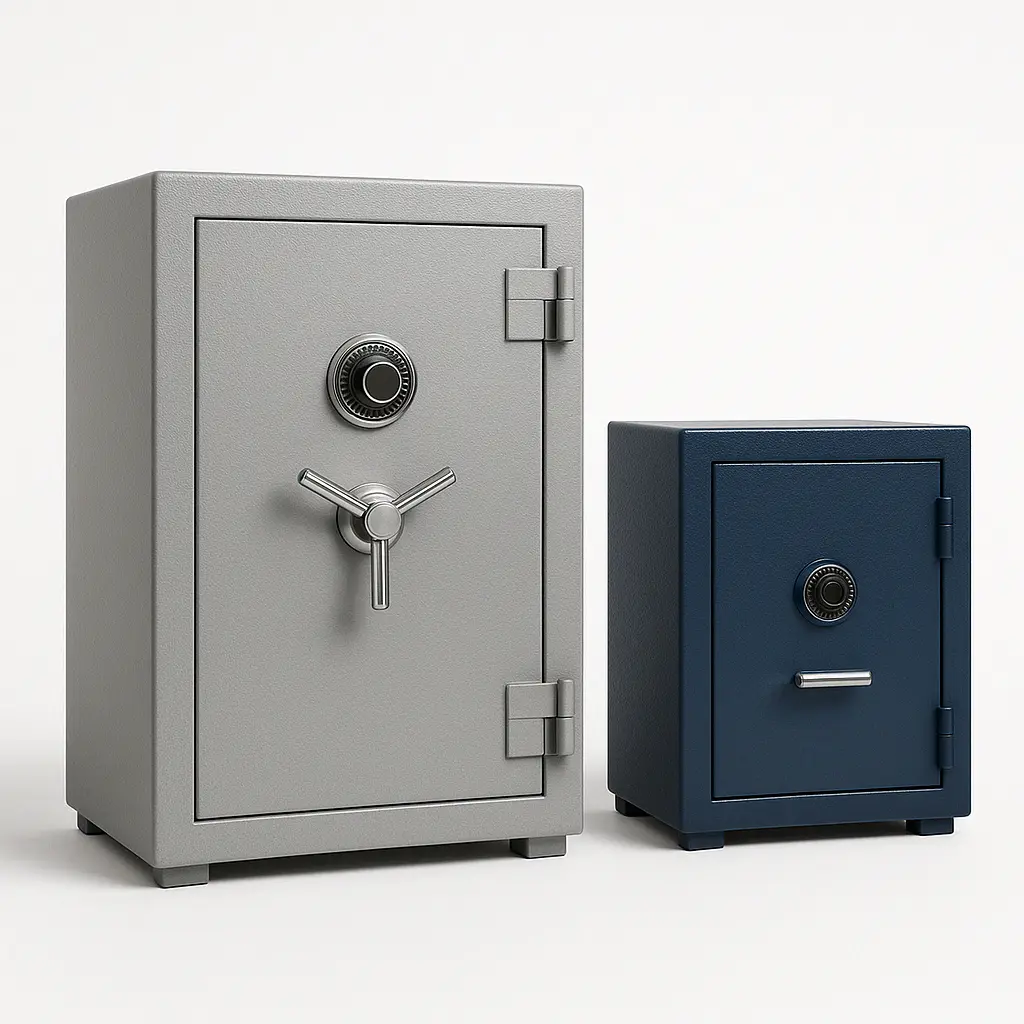
Basically, a safe is a strong, lockable box built to keep things inside safe from stealing, fire, or sometimes both. The main thing to remember is that it’s usually a freestanding thing. Even if it’s super heavy or bolted to the floor, it’s still its own separate container, not like a whole room built into the house walls. They come in all sizes, from little ones for passports to big ones that hold a lot.
Common Types of Safes
Safes aren’t all the same; they’re often built for a specific job. Here are some common kinds you’ll see:
Fire Safes
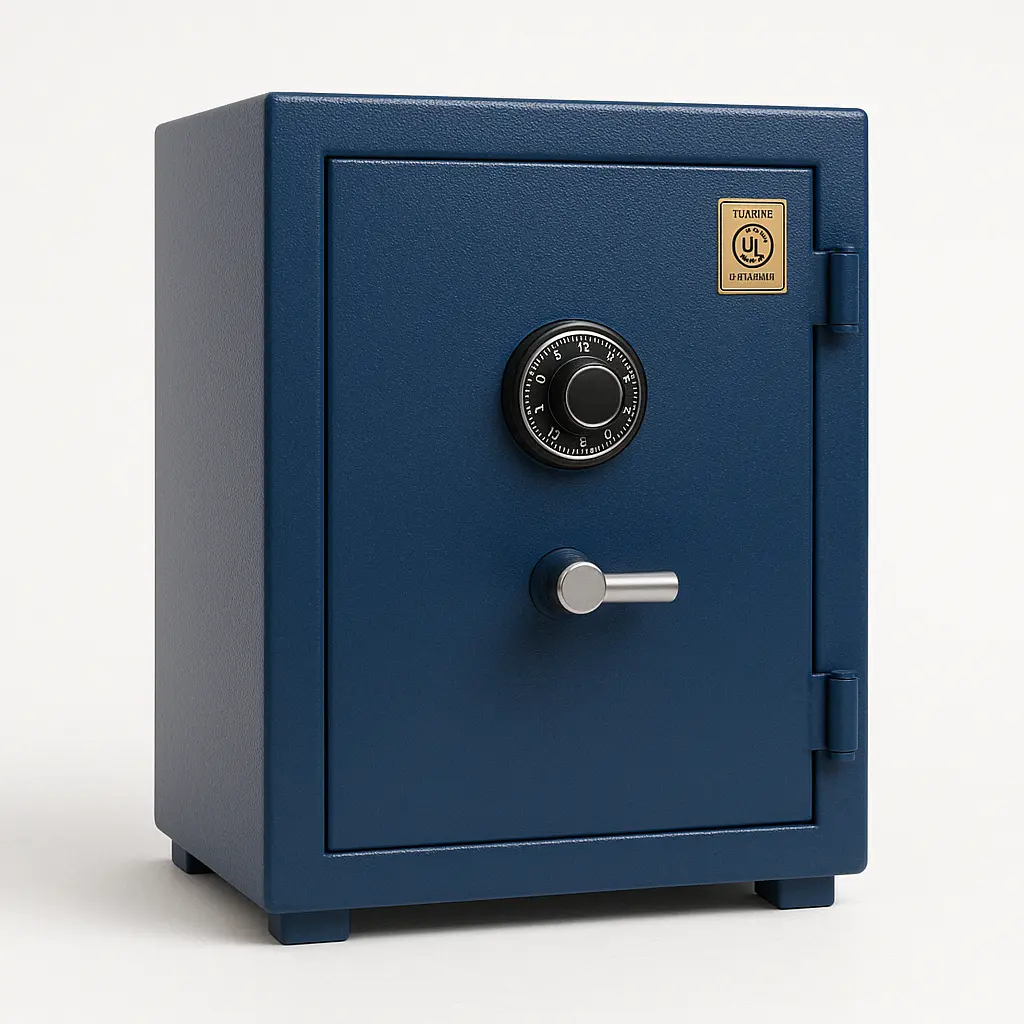
These are built to handle heat. Their number one job? Keep the inside cool enough during a fire so paper doesn’t burn up. They do this with thick insulation and special seals around the door. You’ll see ratings on them telling you how long they lasted in a fire test (like “1 hour”) and the maximum inside temperature they maintained (like below 350°F/177°C for paper). Stopping thieves isn’t their main focus, protecting from fire is.
Burglary Safes
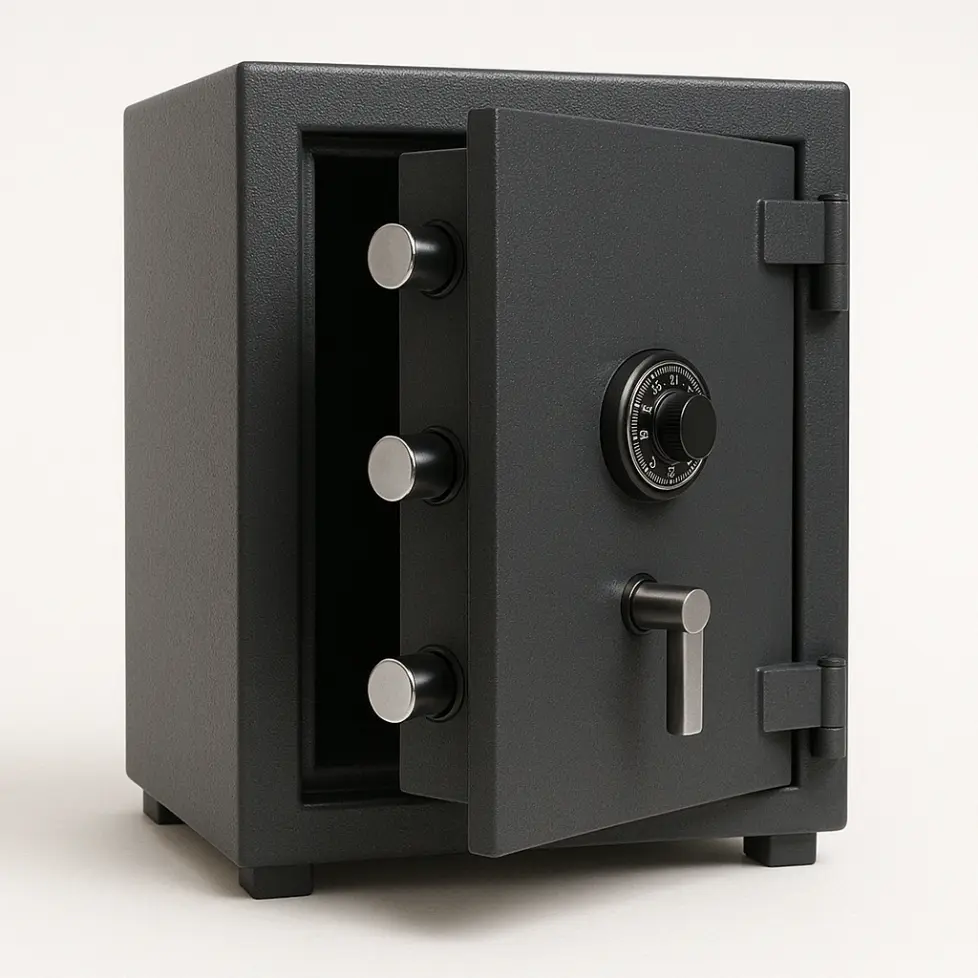
Now these are built tough to stop break-ins. Think thick steel, heavy doors, tricky locks, and designs meant to fight off tools like pry bars, drills, or cutting torches. They get security ratings too (like RSC, TL-15, TL-30) showing how much of an attack they can handle. While the thick steel helps a bit against fire, their main mission is security from theft, unless they also have a fire rating sticker.
Gun Safes
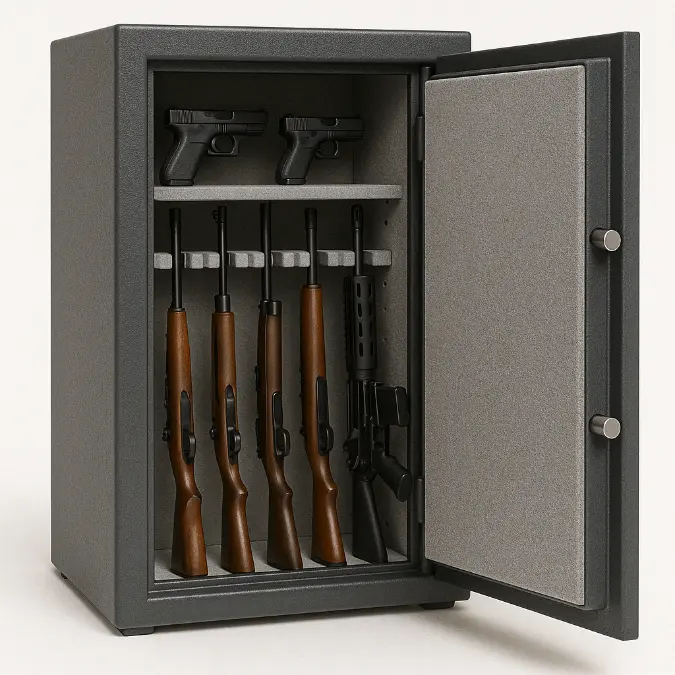
Pretty clear from the name, right? Made for keeping guns stored safely, away from kids or burglars. Gun safes usually try to offer a mix of theft protection (decent steel, good lock) and some fire protection too. Inside, they normally have racks set up for rifles and shelves for handguns or ammo. They come in sizes from small pistol boxes up to huge cabinets for a whole collection.
Data & Media Safes
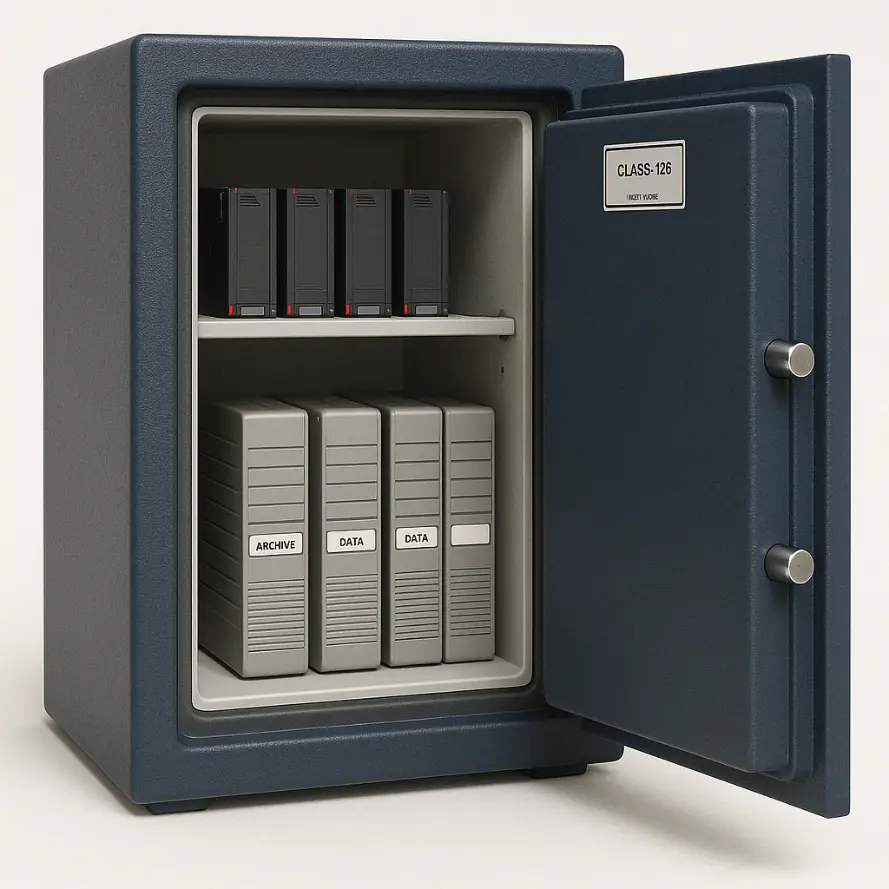
Your computer backups, USB drives, hard drives, old photo negatives – this stuff hates heat and moisture way more than paper does. Data safes are specially built to keep the inside temperature really low (often below 125°F/52°C) and control the humidity during a fire. A regular fire safe made for paper will absolutely destroy digital media, even if the safe itself survives the fire. You need this special type for electronics.
Wall Safes

These are designed to fit inside a wall, tucked between the studs. People like them because they can be hidden, maybe behind a picture frame. Because they have to be shallow enough to fit in a wall, they often don’t have as much space for thick fire insulation as a regular safe might. How secure wall safes are depends a lot on how good the door and lock are.
Floor Safes
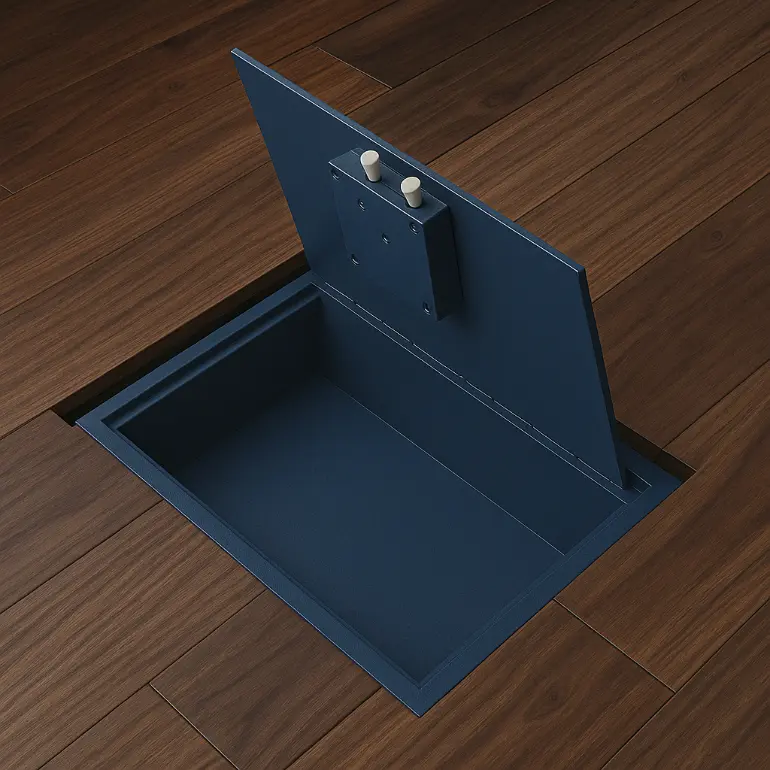
Same idea, but these go into the floor, usually set right into concrete. This makes them really well hidden and super hard for a thief to just rip out and carry away. Being surrounded by concrete often helps with fire resistance too, and makes them tough to break into. The main worry might be water damage if the area floods or during firefighting.
Depository Safes
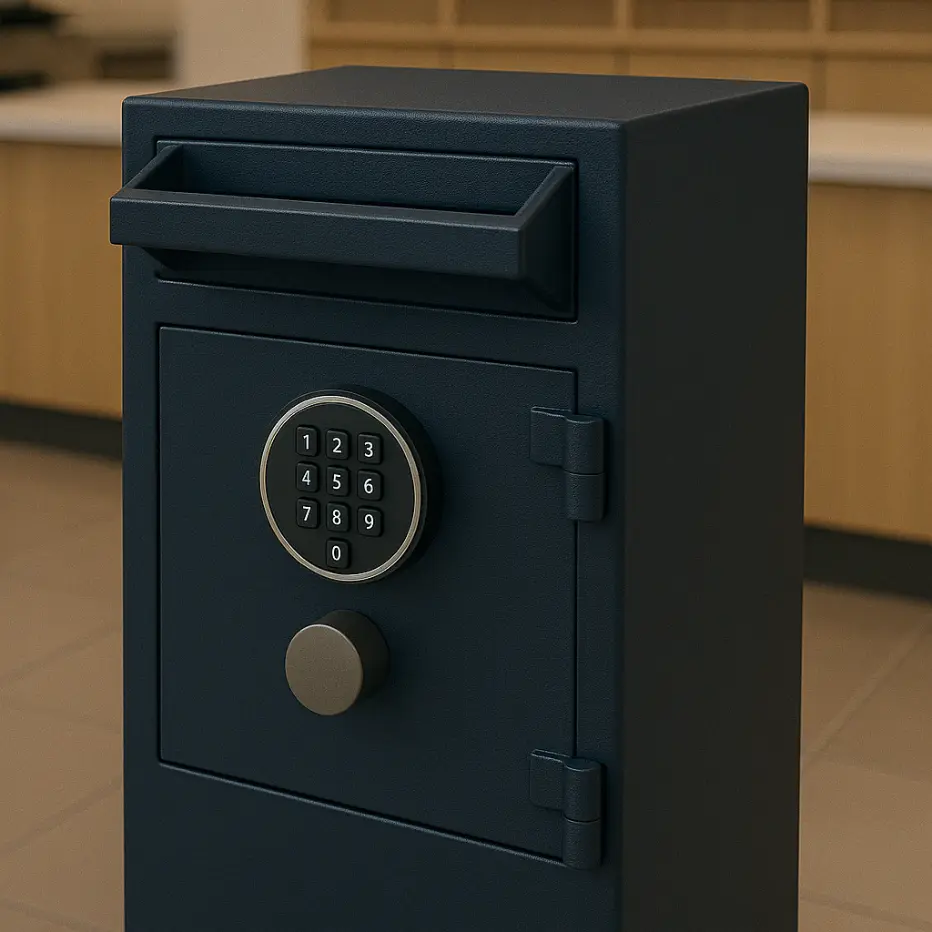
Depository Safes are also known as Tower Safes. You see these in shops or restaurants often. They have a slot or a little drawer on the outside. Employees can drop cash bags or checks into the safe through the slot without needing the key or combination to open the main door. Only certain people can get into the main compartment later. Helps manage cash securely during the day and reduces temptation.
Laptop Safes
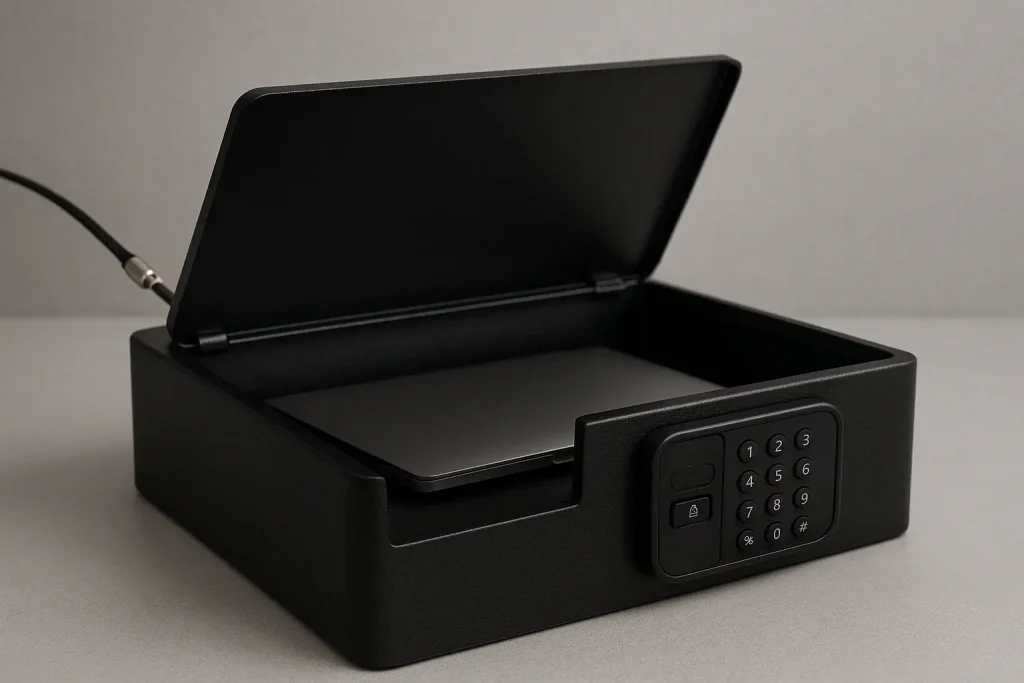
Sized specifically to hold laptop computers, tablets, or similar electronics. You’ll often find these in dorm rooms, offices, or even vehicles. Laptop safes focus on preventing quick grab-and-go theft. While some might offer basic fire protection, their main goal is usually security against casual burglary. Many have pre-drilled holes to use a security cable to tether the safe to something heavy, adding another layer of theft deterrence.
Hotel Safes
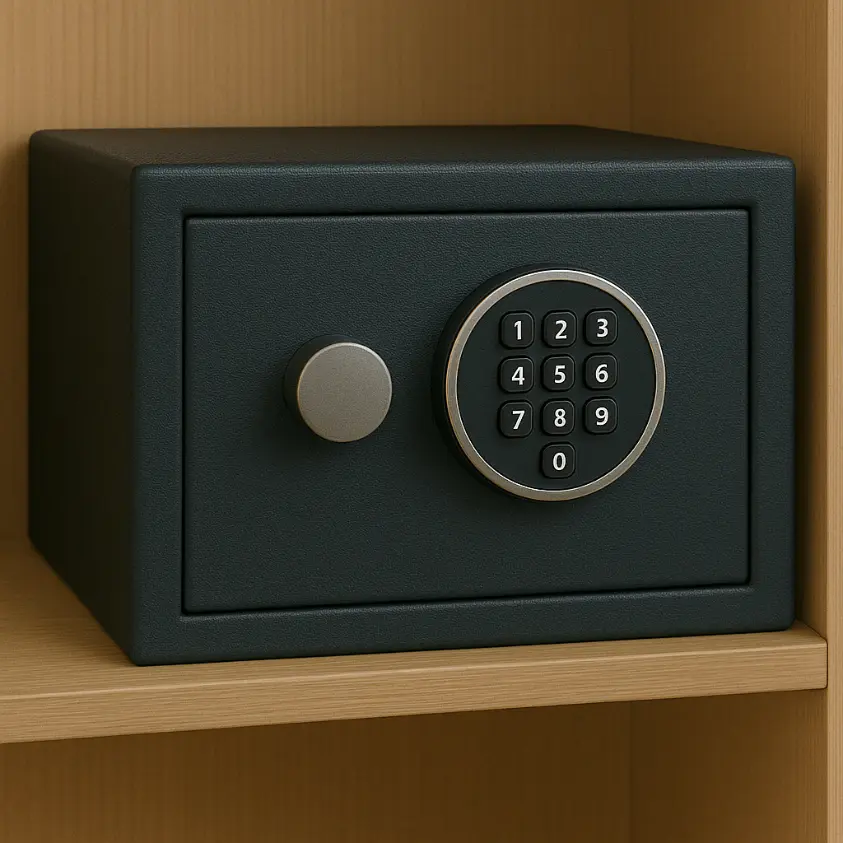
These are usually small safes found in hotel rooms, also known as wardrobe safes. Guests can set their own code to lock up passports, wallets, maybe a camera. They provide basic protection against a quick theft attempt but aren’t generally high-security safes and usually have no fire rating. Management typically has a way to open them too.
Understanding Vaults: More Than Just a Big Box
Okay, let’s talk vaults. Think banks, right? That’s the classic image. But the idea is bigger than just banks.
What is a Vault?
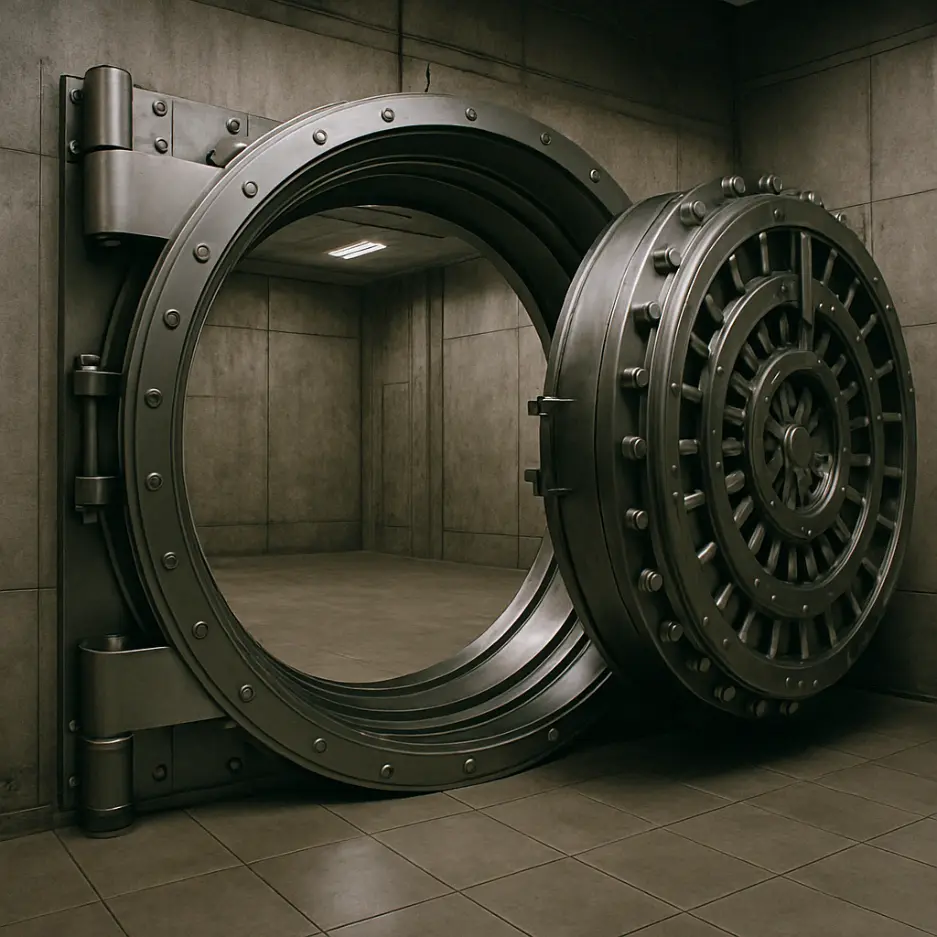
A vault isn’t just a super-sized safe. It’s usually a secure room or a large built-in space designed to protect lots of valuable stuff, important records, or sometimes even people. The big difference? A vault is normally built right into the building or put together on site as a permanent structure. It’s not a box you can just pick up and move. Vaults mean serious construction – think super thick walls reinforced with concrete and steel bars, plus massive, complicated vault doors.
General Categories of Vaults
While safes get sorted by specific uses (gun, data, etc.), vaults are often grouped by their main purpose or security level.
Bank Vaults
The ones everyone pictures. Built to protect tons of cash, gold bars, jewelry, and people’s safe deposit boxes. Security is absolutely extreme, with incredibly thick walls and giant, complex doors often featuring time locks.
Data & Media Vaults
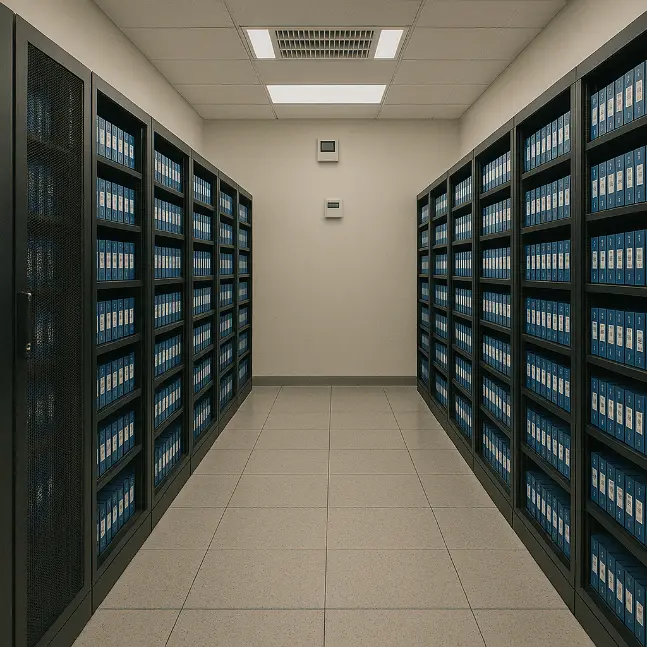
Like data safes, but room-sized. These secure rooms protect huge amounts of backup tapes, computer servers, or other sensitive electronic stuff. Besides top-level security, they need carefully controlled climate (temperature and humidity) and special fire suppression systems that won’t damage electronics (often using gas, not water).
Modular Vaults
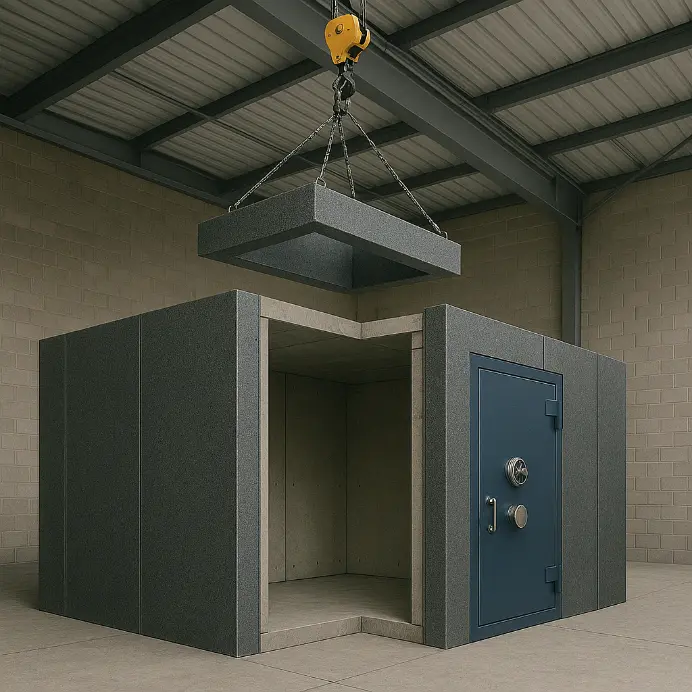
Instead of being poured concrete, these are built using heavy, pre-made high-security panels (steel, special concrete mixes). These panels are delivered to the site and locked or welded together to make the vault walls, ceiling, and floor. It can be easier to put a modular vault into an existing building, and technically they can be disassembled and moved (though it’s a huge job). They still offer certified security ratings.
High-Security Rated Vaults (UL Rated)
Just like safes get burglary ratings, vaults get tested too, often by UL. These ratings (like Class M, Class 1, Class 2, Class 3) tell you how long the vault walls and door can resist skilled attacks using powerful tools, torches, etc. Class 3 is incredibly tough. These ratings are vital for banks and places storing extremely high-value assets.
Safe vs. Vault: Spotting the Key Differences
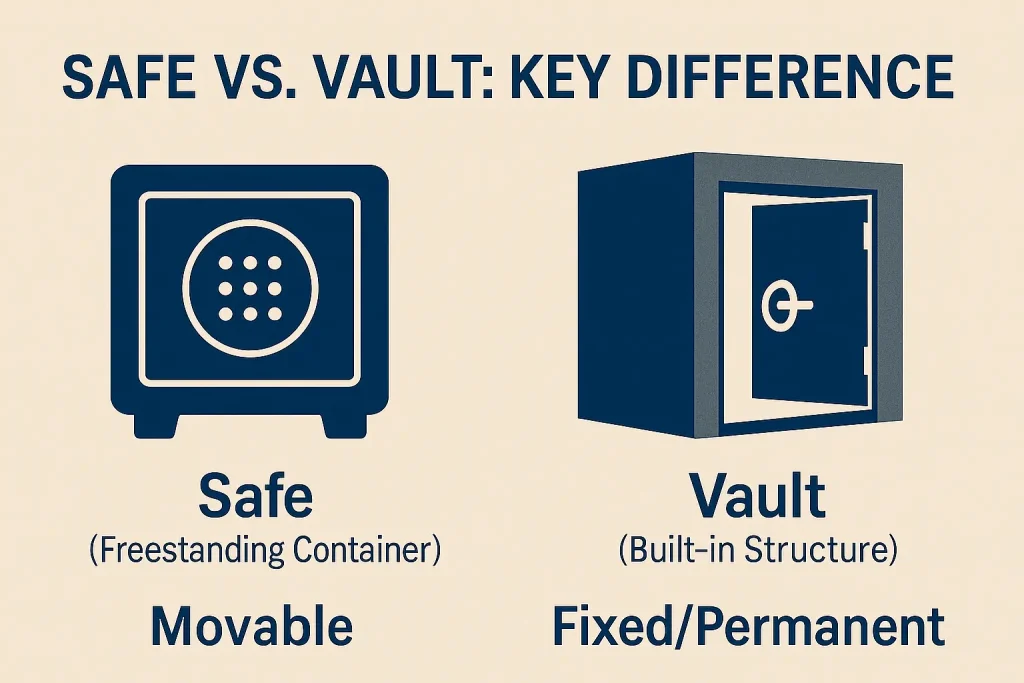
Alright, let’s put them head-to-head:
Construction and Materials
- Safes: Are self-contained boxes. Usually steel walls welded together. Might have fire insulation inside.
- Vaults: Are built-in rooms or structures. Use thick reinforced concrete, heavy steel plates, composite panels. The room is the security.
Size and Capacity
- Safes: Come in sizes from tiny lockboxes to big cabinets. Still basically a ‘container’.
- Vaults: Generally room-sized or even bigger. Designed for walk-in access or storing huge amounts. Much, much larger capacity.
Portability
- Safes: Are freestanding units. They can be moved (even heavy ones, with the right gear).
- Vaults: Are fixed, permanent parts of a building. Moving one means tearing it down and building it again somewhere else. Not portable.
Security Levels
- Safes: Offer a big range, from simple deterrence to serious resistance against tools (TL-rated) or torches (TRTL-rated).
- Vaults: Designed for the highest levels of security. UL vault ratings (Class M up to Class 3) mean resistance against long, expert attacks. Just the vault door can weigh several tons!
Installation Process
- Safes: Delivered as a unit, put in place, maybe bolted down. Wall/floor safes need cutting into structure.
- Vaults: Needs major construction (pouring concrete, site assembly of heavy panels). Installing the massive vault door is complex.
Cost
- Safes: Price varies wildly, from cheap lockboxes to very expensive high-security models.
- Vaults: Way, way more expensive. Think major construction project costs – materials, specialized labor, complex doors. Easily runs into huge figures.
Which is Right for the Need?
Usually, it’s pretty clear which one fits:
- Homes / Small Businesses: Need to protect papers, cash, jewelry, guns, personal items? A safe is almost always the answer. Pick one with the right fire or burglary rating for your needs.
- Banks / Jewelers / Data Centers / High-Security Places: Need to secure huge amounts of cash, whole inventories, critical computer systems, or provide a certified secure room? You need a vault for that level of space and protection.
Conclusion: Boxes vs. Rooms, Different Levels of Security
So, while safes and vaults both keep valuable things safe, they’re really different beasts. Safes are secure boxes you can place (and maybe move). Vaults are secure rooms built right into a place. Safes cover a wide range of protection needs for homes and businesses. Vaults offer top-tier, large-scale security for banks and other high-stakes environments. Knowing the difference – the box versus the room – makes it clear which tool fits which job in the world of security.



